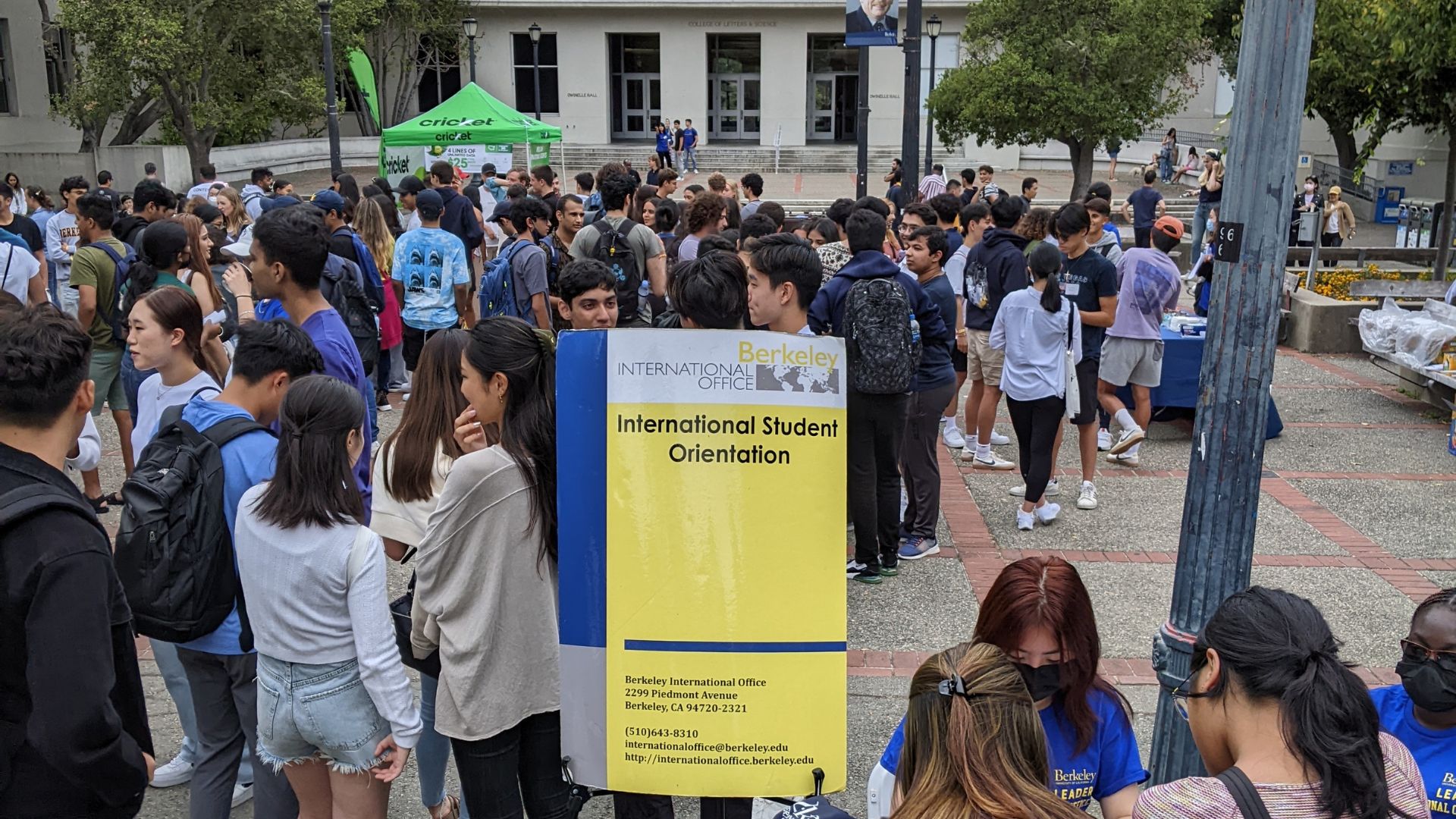Optional Practical Training is a unique opportunity for international students to gain crucial practical experience after earning a U.S. degree.
October 2022

Institutes like University of California (UC), Berkeley, regularly inform their international students of OPT opportunities through the university’s website, social media and weekly bulletins. Courtesy UC Berkeley.
Ishrain Hussain graduated from the University of South Florida with a Master of Science in management information systems before going through Optional Practical Training (OPT). Within 12 months of the on-the-job training, her employer decided to hire her. She currently works for Jabil Software Services as a business unit manager in St Petersburg, Florida.
Hussain says the OPT in her major adds value to her current work role. It also helped her land a job even before she graduated. “Data science and project management concepts were key in kick-starting my career,” she says. “Everything I learned at university, theoretically and practically, played a significant role in my job.”
OPT is available to all international students who complete their undergraduate, graduate or doctoral degree in the United States, who have a good academic record and an F-1 visa. While Hussain’s OPT was 12 months long, students approved for STEM OPT can engage in training for an additional 24 months after finishing their regular post-study completion OPT. Students can participate in up to two separate STEM OPT extensions if they earn a second qualifying STEM degree at a higher education level. Additionally, to be eligible for OPT, a student should also have satisfied the immigration criteria of completing at least one academic semester on their F-1 record and have completed their program.
OPT is offered for each degree a student completes. For example, a student can receive an undergraduate degree in any subject and take up OPT for 12 months in that subject. If the same student completes a master’s degree, they can have another 12 months of OPT in the United States.
Getting started
Experts suggest students talk to an academic adviser and a designated school official at their university’s office of international studies to apply for OPT. It is also important to apply early. Ivor Emmanuel, director, Berkeley International Office at the University of California (UC), Berkeley, advises students to apply as soon as the OPT window opens to obtain their employment authorization document well in time. “Applying earlier will also give students a chance to respond to USCIS (U.S. Citizenship and Immigration Services) if they run into any issues with their application, without jeopardizing their desired employment timeline,” he says.
Though a student need not have a job offer before applying for OPT, planning ahead and zeroing in on employment is crucial, says Emmanuel. “Once their OPT is approved, students are expected to begin employment. Otherwise, they will start accruing unemployment days,” he says. U.S. federal law limits how long F-1 students on post-completion OPT or STEM OPT can be unemployed. The limits are 90 days for post-completion OPT and 150 days for STEM OPT, which includes any days accrued while on post-completion OPT.
A potential job needs to be directly related to the student’s field of study to qualify for OPT. “We often recommend students to check in with their academic advisers to ensure that the employment is appropriate and directly linked to their major,” advises Emmanuel.
“It is also important that your job description aligns with your education background through which you receive OPT,” says Hussain.
Emmanuel says international students at UC Berkeley are regularly informed about OPT through the university’s website, social media, weekly bulletins to students and campus-wide emails to academic advisers.
Simple process
Applying for OPT is a straightforward process. However, experts advise that students comply with deadlines. “Failure to adhere to deadlines can result in a denial of OPT,” warns Emmanuel. “To avoid problems, when in doubt always contact the international student adviser.”
Hussain’s experience of applying for OPT and finding employment was also straightforward, especially with USF International Services’ assistance. “I had my full-time offer letter before I graduated and the OPT process went smoothly,” she says.
After OPT
Students who wish to continue working in the United States are advised to find a sponsor for their work visa. “Generally, the employer you work for would apply for your work visa before your OPT ends,” explains Emmanuel. “It is important you check with the employer ahead of time as there are some companies that may not sponsor.”
In Hussain’s case, moving from OPT to an employer-sponsored H1-B visa was a simple process. “My employer filed for my H1-B visa soon after I joined the company and has given me various opportunities in the field of management and technology to work on,” she says. “I am not limited to being a programmer, data scientist or project manager.”
Whether a student opts to continue working in the United States after OPT or return to their home country, they can gain valuable education and practical training from the United States. In either case, OPT can help discover a passion, as it did for Hussain. “Although I have explored all of these fields in the past six years at my company—programmer, data scientist or a project manager—I am currently working on strategy which I have learned is my passion.”
Natasa Milas is a freelance writer based in New York City.
COMMENTS